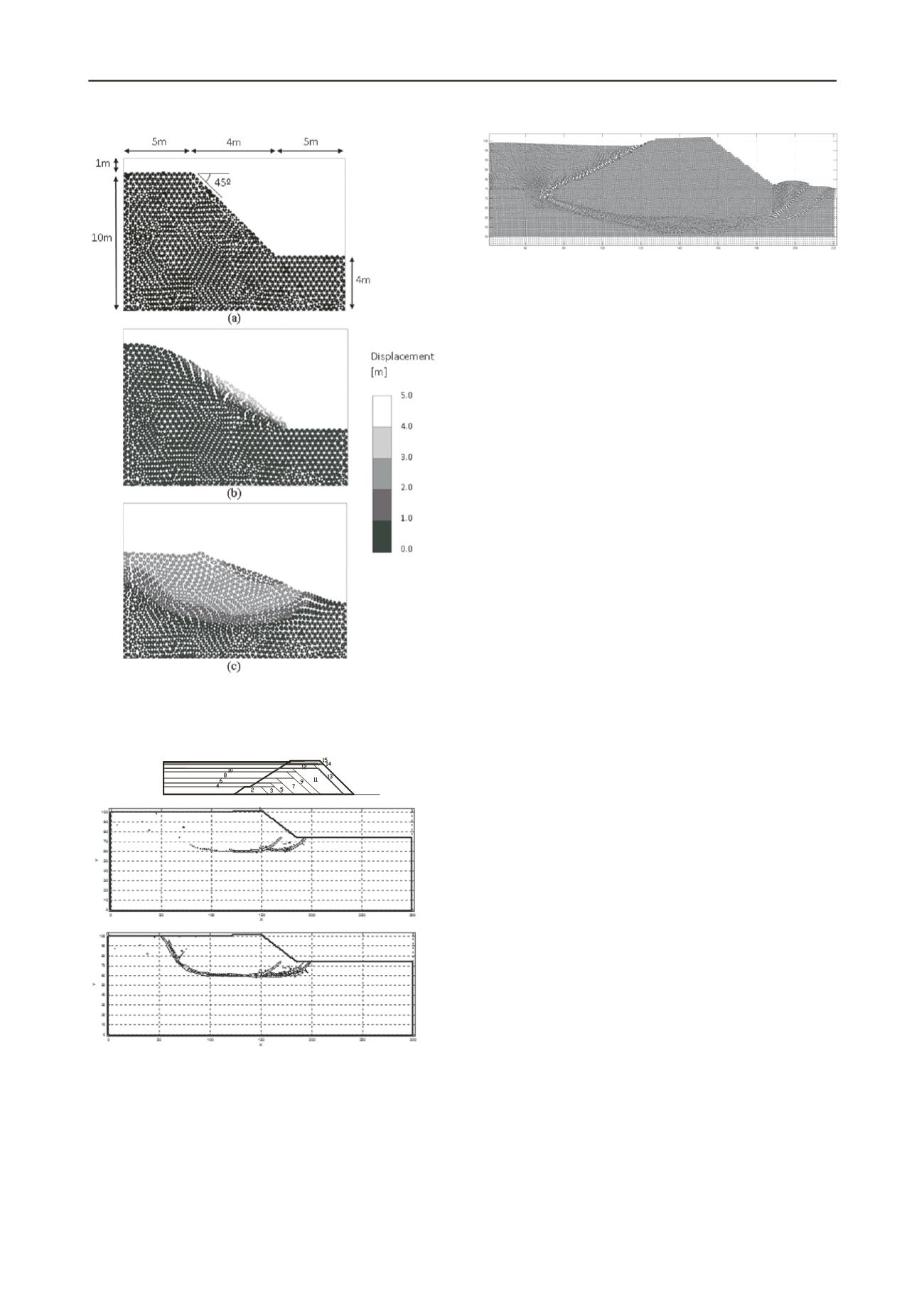
856
Proceedings of the 18
th
International Conference on Soil Mechanics and Geotechnical Engineering, Paris 2013
Figure 7. (a) Initial geometry and particle distribution for both
cases; (b) Final displacements for the frictional material; (c)
Final displacements for the cohesive material.
Figure 9. Model of Azalcóllar dam few seconds after the tailing’s
liquefaction. Particle displacements are not amplified. (Zabala &
Alonso, 2011).
5 CONCLUSION
The Material Point Method is a potentially powerful tool in the
geotechnical engineering because its capabilities to model
dynamical problems and to integrate the analysis of failures and
the subsequent large displacements. Four examples have been
presented in this work, illustrating all this capacities in
mechanical and coupled hydro-mechanical frameworks.
6 ACKNOWLEDGEMENTS
The first author acknowledge the scholarship FPI provided by
the Spanish Ministry of Science and Innovation (MICINN).
Also acknowledge the support received from the Col·legi
d’Enginyers de Camins, Canals i Ports de Catalunya.
7 REFERENCES
Alonso, E. E., & Gens, A. (2006). Aznalcóllar dam failure. Part 1: Field
observations and material properties.
Géotechnique
,
56
(3), 165–
183.
Andersen, S., & Andersen, L. (2009). Modelling of landslides with the
material-point method.
Computational Geosciences
,
14
(1), 137–
147.
Beuth L., Benz T., Vermeer P.A., Coetzee C.J., Bonnier P., Van Den
Berg P. (2007).Formulation and Validation of a Quasi-Static
Material Point Method,
10th International. Symposium on
Numerical Methods in Geomechanics (NUMOG)
, Rhodes,
Greece
Beuth, L., Benz, T., Vermeer, P. A., & Więckowski, Z. (2008). Large
deformation analysis using a quasi-static Material Point Method.
Journal of Theoretical and Applied Mechanics
,
38
(1-2), 45–60.
Jassim, I., Stolle, D., & Vermeer, P. (2012). Two-�phase dynamic
analysis by material point method.
International Journal for
Numerical and Analytical Methods in Geomechanics
.
doi:10.1002/nag
Sulsky, D., Zhou, S.-J., & Schreyer, H. L. (1995). Application of a
particle-in-cell method to solid mechanics.
Computer Physics
Communications
,
87
(1–2), 236–252. doi:10.1016/0010-
4655(94)00170-7
Verruijt, A. (2010).
An Introduction to Soil Dynamics
.Springer. Berlin,
Heidelberg.
Zabala, F., & Alonso, E. E. (2011). Progressive failure of Aznalcóllar
dam using the material point method.
Géotechnique
,
61
(9), 795–
808. doi:10.1680/geot.9.P.134
Figure 8. Construction sequence and development of contours of equal
equivalent deviatoric plastic strain (from Zabala & Alonso, 2011).
Zienkiewicz, O. C., & Shiomi, T. (1984). Dynamic behaviour of
saturated porous media; the generalized Biot formulation and its
numerical solution.
International Journal for Numerical and
Analytical Methods in Geomechanics
,
8
, 78–96.


